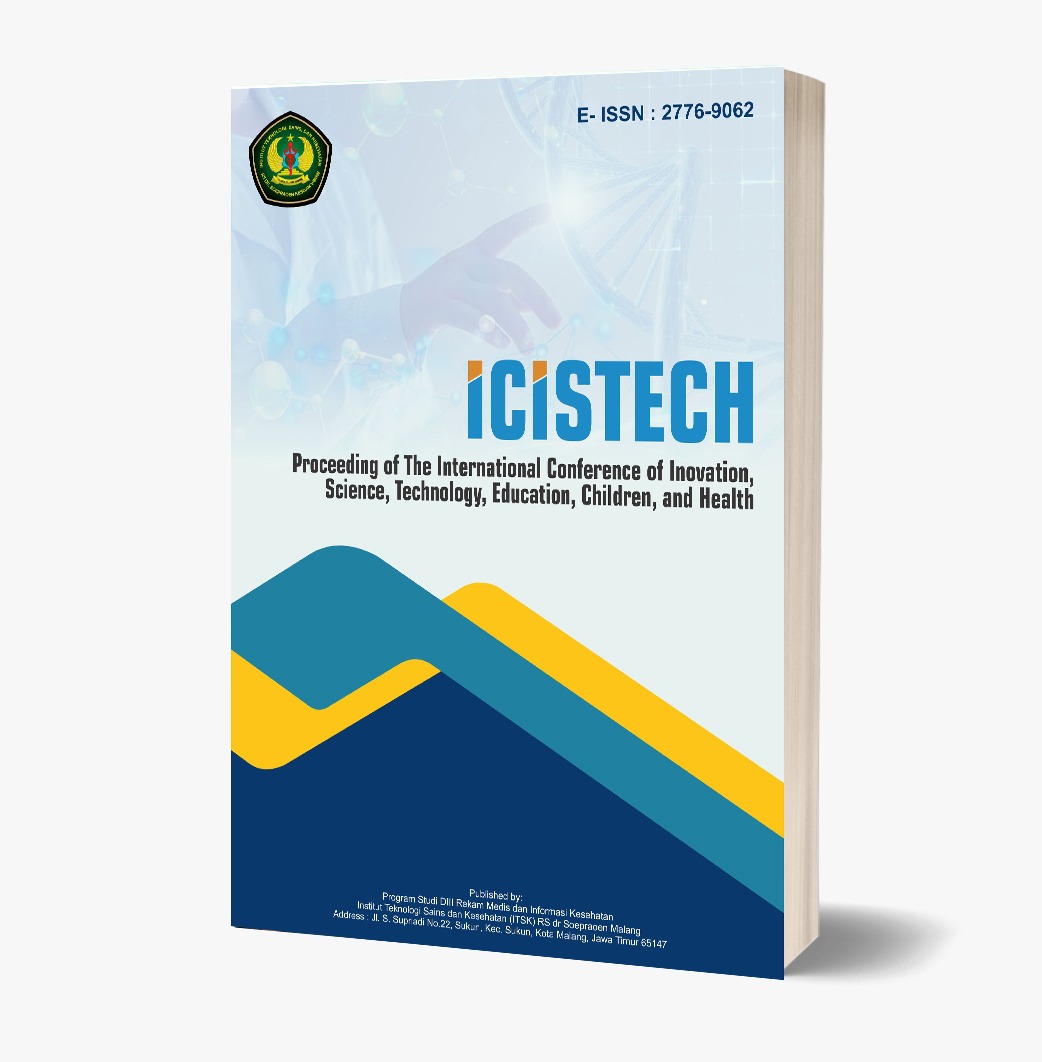Influence of Technology Availability and Ease of Use on Academic Achievement with Behavioral Control, Usefulness, and Subjective Norm as Mediators
DOI:
https://doi.org/10.62951/icistech.v4i2.109Keywords:
Technology Availability, Perceived Ease of Use, Academic AchievementAbstract
This study aims to analyze the influence of Technology Availability and Perceived Ease of Use on Academic Achievement with mediating variables of Perceived Behavior, Perceived Usefulness, and Subjective Norm. A qualitative approach with an explanatory design was used in this study. The research population consists of all students at Politeknik Bisnis Indonesia who actively use technology in academic activities, with a sample of 130 respondents selected through a purposive sampling technique. The research results show that Technology Availability has a significant positive effect on Perceived Behavioral Intention (T-Statistic 8.412; P-Value 0.000) and Perceived Usefulness (T-Statistic 3.249; P-Value 0.001). Perceived Ease of Use shows a significant positive effect on Perceived Usefulness (T-Statistic 10.875; P-Value 0.000) and Subjective Norm (T-Statistic 11.476; P-Value 0.000). These results support the Technology Acceptance Model (TAM) theory. Additionally, Perceived Behavioral Intention and Perceived Usefulness each have a significant positive effect on Academic Achievement (T-Statistic 3.382; P-Value 0.001, T-Statistic 2.422; P-Value 0.016). However, Subjective Norms do not have a direct impact on Academic Achievement. (T-Statistik 1,452; P-Value 0,147). These findings highlight the importance of technology availability and perceived ease of use in enhancing students' academic performance by meditating on behavioural intention and perceived benefits. Recommendations are given for improving access and technology training in educational environments to maximize the use of technology in learning.
References
Ajzen, Icek. 1991. “The Theory of Planned Behavior.” Organizational Behavior and Human Decision Processes. https://doi.org/10.1016/0749-5978(91)90020-T
Al-Emran, M., Mezhuyev, V., & Kamaludin, A. (2018). Technology Acceptance Model in M-learning context: A systematic review. Computers & Education, 125, 389-412. https://doi.org/10.1016/j.compedu.2011.06.008
Azzahra, Talitha Radhiyya, and Nurrani Kusumawati. 2023. “The Impact of Mobile Service Quality, Perceived Value, Perceived Usefulness, Perceived Ease of Use, Customer Satisfaction Towards Continuance Intention to Use MyTelkomsel App.” Journal of Consumer Studies and Applied Marketing 1(1):46–60. DOI: 10.58229/jcsam.v1i1.74
Davis, Fred D. 1989. “Perceived Usefulness, Perceived Ease of Use, and User Acceptance of Information Technology.” MIS Quarterly 319–40. https://doi.org/10.2307/249008
Gurung, Binod, and David Rutledge. 2014. “Digital Learners and the Overlapping of Their Personal and Educational Digital Engagement.” Computers & Education 77:91–100. https://doi.org/10.1016/j.compedu.2014.04.012
Hair Jr, Joseph F., G. Tomas M. Hult, Christian M. Ringle, Marko Sarstedt, Nicholas P. Danks, and Soumya Ray. 2021. Partial Least Squares Structural Equation Modeling (PLS-SEM) Using R: A Workbook. Springer Nature. https://library.oapen.org/handle/20.500.12657/51463, Doi: 10.1007/978-3-030-80519-7
Kirkwood, Adrian, and Linda Price. 2014. “Technology-Enhanced Learning and Teaching in Higher Education: What Is ‘Enhanced’and How Do We Know? A Critical Literature Review.” Learning, Media and Technology 39(1):6–36. https://doi.org/10.1080/17439884.2013.770404
Lin, Shu Hsu, Hsing-Chen Lee, Ching-Ter Chang, and Changjui James Fu. 2020. “Behavioral Intention towards Mobile Learning in Taiwan, China, Indonesia, and Vietnam.” Technology in Society 63:101387. https://doi.org/10.1016/j.techsoc.2020.101387
Park, Sung Youl. 2009. “An Analysis of the Technology Acceptance Model in Understanding University Students’ Behavioral Intention to Use e-Learning.” Journal of Educational Technology & Society 12(3):150–62. https://doi.org/10.31004/basicedu.v7i1.4196
Putro, Adin Kusumo, and Yoshi Takahashi. 2024. “Entrepreneurs’ Creativity, Information Technology Adoption, and Continuance Intention: Mediation Effects of Perceived Usefulness and Ease of Use and the Moderation Effect of Entrepreneurial Orientation.” Heliyon 10(3). DOI: 10.1016/j.heliyon.2024.e25479
Rozenkowska, Katarzyna. 2023. “Theory of Planned Behavior in Consumer Behavior Research: A Systematic Literature Review.” International Journal of Consumer Studies 47(6):2670–2700. https://doi.org/10.1111/ijcs.12970
Taylor, Shirley, and Peter Todd. 1995. “Decomposition and Crossover Effects in the Theory of Planned Behavior: A Study of Consumer Adoption Intentions.” International Journal of Research in Marketing 12(2):137–55. https://doi.org/10.1016/0167-8116(94)00019-K
Teo, Timothy. 2011. “Factors Influencing Teachers’ Intention to Use Technology: Model Development and Test.” Computers & Education 57(4):2432–40. https://doi.org/10.1016/j.compedu.2011.06.008
Venkatesh, Viswanath, and Fred D. Davis. 2000. “A Theoretical Extension of the Technology Acceptance Model: Four Longitudinal Field Studies.” Management Science 46(2):186–204. https://doi.org/10.1287/mnsc.46.2.186.11926
Venkatesh, Viswanath, Michael G. Morris, Gordon B. Davis, and Fred D. Davis. 2003. “User Acceptance of Information Technology: Toward a Unified View.” MIS Quarterly 425–78. https://doi.org/10.2307/30036540
Yuliana, Eneng, Sri Dewi Nirmala, and Lidwina Sri Ardiasih. 2023. “Pengaruh Literasi Digital Guru Dan Lingkungan Belajar Terhadap Hasil Belajar Siswa Sekolah Dasar.” Jurnal Basicedu 7(1):28–37. https://doi.org/10.31004/basicedu.v7i1.4196
Zhou, Tao, Yaobin Lu, and Bin Wang. 2010. “Integrating TTF and UTAUT to Explain Mobile Banking User Adoption.” Computers in Human Behavior 26(4):760–67. https://doi.org/10.1016/j.chb.2010.01.013
Zubir, Muhammad Hafiz Hariz, and Muhammad Safuan Abdul Latip. 2024. “Factors Affecting Citizens’ Intention to Use e-Government Services: Assessing the Mediating Effect of Perceived Usefulness and Ease of Use.” Transforming Government: People, Process and Policy 18(3):384–99. https://doi.org/10.1108/TG-04-2023-0040
Downloads
Published
How to Cite
Issue
Section
License
Copyright (c) 2024 Proceeding of The International Conference of Inovation, Science, Technology, Education, Children, and Health

This work is licensed under a Creative Commons Attribution-ShareAlike 4.0 International License.













